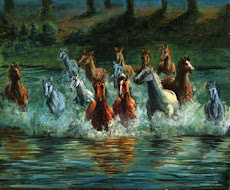
There are several ways you could go on this, but my suspicion is that one will get you better results than the others.I could tell you that art plays a large part in making our lives infinitely rich. Imagine, just for a minute, a world without art! (You may think "So what?", but please consider the impact that lack of graphics would have on your favorite video game.) Art stimulates different parts of our brains to make us laugh or incite us to riot, with a whole gamut of emotions in between. Art gives us a way to be creative and express ourselves. For some people, art is the entire reason they get out of bed in the morning. You could say "Art is something that makes us more thoughtful and well-rounded humans."On the other hand, art is such a large part of our everyday lives, we hardly even stop to think about it. Look at the desk or table where you are, right this minute. Someone designed that. It is art. Your shoes are art. Your coffee cup is art. All functional design, well done, is art. So, you could say "Art is something that is both functional and (hopefully) aesthetically pleasing to our eyes."You might say "Art is in a constant state of change, so nobody can really pin down what it is." The constant change part is true, but the not pinning it down part is going to get you a bad grade. It may even raise a comment or two about your being some sort of wisenheimer. Don't go this route.You might even say "Art is subjective, and means something different to every single person on earth." This, too, is the truth. I would caution against this approach, however, as it would require a stack of paper from here to the moon to cite all of your 6.3 billion references. Now, everything just stated has elements of truth, but is largely based on opinion. My opinion is, frankly, useless in your paper-writing endeavor. Form your own opinions (that should be the reason you are receiving an education, after all), and be sure to sprinkle them in your answer...which needs a factual basis, so here are the cold hard facts


